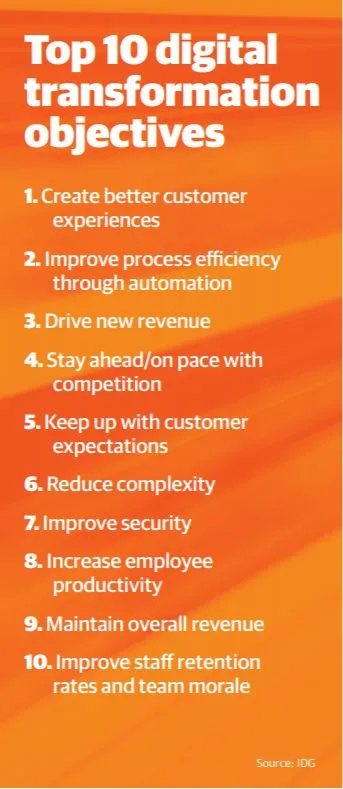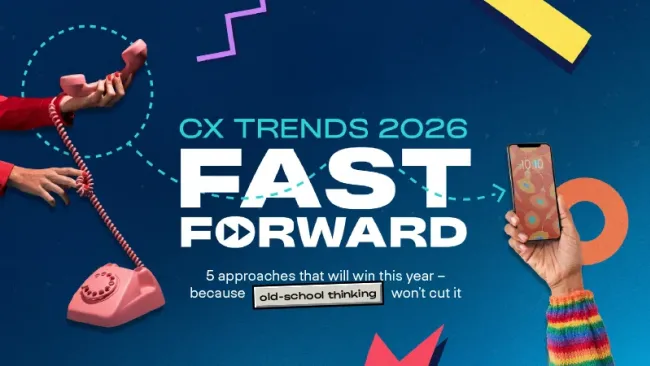Innovative. Convenient. Modern. From the 18th through the 20th centuries, these terms applied to department stores. Today, it’s a very different story.
Department stores and other retailers are at a crossroads as they rethink strategies for engaging modern consumers and building loyalty. Here’s how traditional companies are taking action to adapt.
Insight-fueled DTC
For several years now, e-commerce growth has helped legacy brands offset stagnant in-store sales growth. However, Mary Meeker’s 2019 Internet Trends report showed that the e-commerce growth rate is slowing down. Although the growth rate of direct-to-consumer (DTC) businesses still exceeded brick-and-mortar businesses, e-commerce’s revenue growth as a whole only saw a 0.3 percent increase YoY.
So, it’s not a surprise that legacy brands are adopting a DTC strategy as the competition for customers intensifies. Some big-store retailers like JCPenney are courting DTC brands with attractive deal terms and shop-in-a-shop retail concepts, while others are ramping up data analytics and customer insights to gain an edge by making more informed decisions on pricing, inventory planning, and more.
Lowe’s, the home improvement company, recently acquired the Retail Analytics platform from Boomerang Commerce. The platform’s technology will be integrated into Lowe’s retail business to “bolster strategic and data-driven pricing and merchandise assortment decisions,” according to a company statement.
In a similar move, Nike acquired the predictive analytics firm Celect, which optimizes inventory by making predictions based on local demand. Celect is Nike’s second analytics acquisition, following its purchase of customer analytics startup Zodiac Metrics in 2018. What’s more, Nike’s new CEO, John Donahoe, who is expected to join the company in January, was president and CEO of the cloud computing company ServiceNow.
On the customer-facing side, The North Face uses IBM Watson via IBM Expert Personal Shopper to give personalized product recommendations to customers. Retailers aren’t the only companies betting on data analytics. Liberty Mutual Insurance’s open API developer portal blends public data with its proprietary insurance data to inform future products. And real estate firm Savills uses artificial intelligence to extract information from leases and contracts to help clients optimize their real estate portfolios with outlook data, tenant/landlord conditions, and other insights.
While companies are investing in customer insights, many still have a long way to go before they see results, says Nikki Baird, vice president of retail innovation at Aptos and a former retail analyst. “Many retailers are still searching for one view of their customer, let alone doing anything revolutionary with that data,” she says.
Many of the “flashy” things that retailers experiment with, Baird continues, such as smart fitting rooms and AR mirrors, phone-based in-store personalization, etc., are “still coming one-off from agencies and the like, and are disconnected from the retailer’s core technology platforms. Which means whatever you learn from it for customer engagement, you can’t capture and bring back into the enterprise.” Still, some retailers are beginning to move away from siloed, disconnected experiences, Baird adds, and expects more to turn the corner this year.
Reinventing the storefront
In addition to selling directly to consumers, more brands are reimagining the in-store experience to reflect the way people shop today. “Retailers have recognized they can’t just sit it out anymore,” says Steve Rowen, a managing partner at Retail Systems Research. “They’re getting sick of having Amazon eat their lunch, and the best of them have decided to do something about it—namely to make their stores more interesting.”
The best retailers, Rowen notes, are opening new concepts in new markets, replacing old models with new formats, and loading stores up with the technologies that will keep customers intrigued. In fact, 68 percent of retailers say in-store technology is what creates the competitive advantage they need to stay relevant, up 20 percent from the year prior, according to RSR. “The number is even higher for those whose sales are already outperforming the norm, so these are the types of real-world realizations we all as shoppers have been hoping to see for quite some time,” Rowen adds.
The transformation of stores represents the confluence of several key trends: the transition of omnichannel experiences from a novelty to the norm; the need for e-commerce companies to further differentiate their brands, and consumer preference for digital-enabled shopping experiences. “Brick and mortar will merge completely by the mid-2020s to a point where a retailer’s physical and digital properties will complement each other’s sales,” predicts the research and consulting firm Quantumrun in a report.
Running with the idea that shoppers want physical retail stores that offer digital and easy-to-use experiences, The Vitamin Shoppe recently remodeled one of its stores in New Jersey, calling it a “new innovation store,” and plans to open similar stores through 2020. The store includes on-demand digital product guides, mobile point-of-sale checkout, and an area where customers can take Vitamin Shoppe’s “Only Me” health assessment and receive personalized vitamin subscriptions based on the assessment. The store also has a complimentary body composition analysis station and a supplement sampling machine.
Additionally, the Vitamin Shoppe deploys traffic counting and heat mapping technology to analyze how in-store associates, marketing campaigns, and promotions affect the shopper’s path to purchase at its remodeled store.
The store’s new features support its leaders’ hope that data and technology will enable the company to offer its customers a better, more personalized experience. “The new digitally powered elements of our store encourage customers to deeply engage with our product offerings, as well as our highly knowledgeable in-store Health Enthusiasts, for a fully integrated omnichannel experience,” comments Sharon Leite, chief executive officer of The Vitamin Shoppe, in a statement.
If you can’t beat ‘em...
It’s unquestionable that e-commerce changed the way people shop. But increasingly, online companies are opening up physical stores. The trend—clicks to bricks—underscores what Nigel Fenwick, a principal analyst at Forrester, describes in a blog as the perpetual challenge of evolving customer experiences: “As expectations rise, we need to continuously evolve our experiences simply to maintain equilibrium in the market. Over time, the customer experiences from different brands begin to look the same, and it gets harder and harder to exceed customer expectations.”
In short, even e-commerce companies need more ways to engage and connect with customers to grow revenue and market share. It’s why Amazon, Warby Parker, Casper, and other e-commerce firms have created a physical footprint. And in some cases, purely digital retail models revealed gaps in the customer experience that could only be filled with humans.
Consider online banking. Research shows that while people enjoy the convenience of online banking, many still want to interact with humans, especially when they need customer support. PwC’s “2019 Digital Banking Consumer Survey,” which surveyed approximately 5,000 financial services customers, found that physical locations still matter with 61 percent of respondents indicating that a local branch is important to them when considering where to bank. And in-person assistance at a branch was most important across the wealth spectrum.

While direct or online-only banks scored higher satisfaction points compared to traditional banks in J.D. Power’s “2019 Direct Banking Satisfaction Study,” an expanded data set showed a decrease in satisfaction between new direct banking customers and those who had been doing business with direct banks for two years or more, reports The Financial Brand.
The takeaway is that developing digital-only subsidiaries may not be the most effective approach for traditional banks that are looking to better engage consumers. “Strategies must solve for customer choice and convenience rather than digital versus physical,” advises PwC’s Digital Banking report.
One example of a financial services company that is attempting to fuse physical and digital in an innovative way is PurePoint Financial, a division of MUFG Union Bank. PurePoint Financial is a “hybrid digital bank,” according to a company fact sheet. It offers high-yield online savings accounts and CDs on a digital platform as well as branches, which it calls Financial Centers. At the Financial Centers, associates are on hand to provide mainly administrative support, such as updating your personal information. The centers do not provide cash withdrawals or deposits.
Although there are obvious shortcomings—customers still need an external bank account to make deposits and withdrawals—PurePoint Financial represents one way for companies to provide the human interaction and physical locations that even online customers crave.
Racing toward the last mile
Consumers want their products fast without paying extra for them. According to an NRF survey of over 3,000 adults, 39 percent expect two-day shipping to be free, and 29 percent have backed out of a purchase because two-day shipping wasn’t free.
During the holidays, retailers rushed to meet those expectations. Best Buy, Target, and Walmart offered free next-day delivery on thousands of items. Also in time for the holiday season, Walgreens partnered with FedEx to let customers print return labels and have packages shipped from Walgreens locations. Michael’s offered UPS parcel pickup and drop-off in over 1,100 stores. And Kohl’s allowed customers to drop off Amazon returns at its stores.
For companies that seek to compete on shipping, it’s important to look at the process from end-to-end and plan accordingly, Baird points out. “I find that retailers overly focus on shipping speed and forget that there is a whole lifecycle to that order before it gets out the door,” she says. “Yes, you might be able to achieve next-day shipping, but what difference does that make if it took five days just to get the product into a box and out the door? Speeding the connections between commerce and fulfillment, before product even gets into the box, can go a long way toward customer satisfaction without requiring you to have to subsidize next-day shipping just to be competitive.”
Focus, focus, focus
For retailers and others, digital transformation is difficult. It’s also a never-ending evolution. So how can companies innovate strategically? It comes down to approach, according to Rowen.
“There’s so much that needs to be done, and we’ve heard plenty of nightmare tales about brands that build ‘what do we do to catch up?’ teams, only to have a lack of focus bring about more harm than good,” he says. “So, we caution that whatever your effort, stay focused on solving the business task at hand.”
















